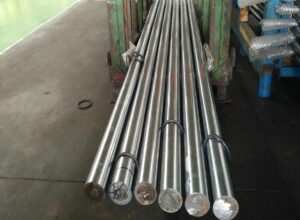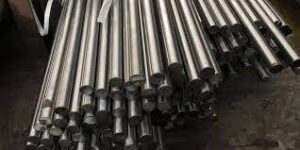Tool Steel for Cutting and Forming Processes in Metalworking
Introduction
Tool steels are essential engineering materials that enable the cutting and forming of metals in manufacturing applications. The specialized properties of tool steels provide the hardness, wear resistance, strength, and durability required for metal cutting tools, dies, and molds to withstand extreme conditions.
This article explores the use of tool steels in key metalcutting and metalworking processes. It examines the demands of machining, grinding, stamping, forging, extrusion and other processes. Recommendations are provided for selecting optimized tool steel grades for the unique requirements of each process. Heat treating, surface enhancements, quality control, and performance testing considerations are also discussed.
Overview of Metalworking Processes Requiring Tool Steels
Common metal manufacturing processes utilizing tool steels include:
- Machining – Turning, drilling, milling, boring, grinding
- Metal stamping – Blanking, punching, bending, drawing
- Forging – Open/closed die forging, roll forging, upset forging
- Extrusion – Cold/hot extrusion of rods, bars, tubes
- Wire drawing – Rod breakdown, wire drawing
- Shearing – Flat shear cutting, slitting
- Fastener manufacturing – Cold heading, thread rolling
- Metal casting – Die casting, permanent mold casting
- Rolling – Flat rolling, shape rolling
The tooling must withstand high temperatures, pressures, and abrasive wear conditions.
Challenging Requirements of Metalworking Tool Steels
 Demanding needs include:
Demanding needs include:
- Withstand high cutting forces and temperatures in machining
- Resist deformation under high stamping or extrusion pressures
- Maintain dimensions and finishes over hundreds of thousands of cycles
- Absorb extreme shock loads and pressures from metal flow
- Provide abrasion resistance for cutting, shearing and wearing actions
- Retain adequate toughness to prevent catastrophic failure
- Resist softening and thermal fatigue at moderate temperatures
Selecting the proper tool steel is key to performance.
Desired Properties for Metalworking Tool Steels
To perform effectively, tool steels for metalworking need:
- Very high hardness at room and moderately elevated temperatures
- Strength to resist deformation under load
- Toughness to endure interrupted cutting and prevent brittle failure
- Good thermal fatigue resistance for alternating heating and cooling
- Excellent wear resistance for abrasion from metal flow
- Dimensional stability during thermal cycling
- Sufficient corrosion resistance for some applications
The right balance of these properties ensures reliable, long lasting tool performance.
Tool Steel Grades for Machining Cutting Tools
For turning, milling, drilling and grinding metals, suitable grades include:
- High speed steels – M2, M4, M42
- Cobalt high speed steels – M35, M36, M42
- Cemented carbides – Various WC-Co grades
- Ceramics – Alumina, silicon carbide, silicon nitride, PCD
- Coated carbides or ceramics – TiAlN, TiN, TiCN, DLC
Hardness at high temperatures is critical for cutting tool integrity.
Tool Steel Grades for Metal Forming Dies
Top selections for stamping, forging, extrusion and drawing dies:
- Shock resisting cold work tool steels – S5, S7, S390, S590
- Air hardening cold work tool steels – A2, A6, A7, A10
- High carbon, high chromium cold work steels – D2, D3, D6, D7
- Hot work tool steels – H11, H13, H19, H21, H23
- Powder metallurgy tool steels – CPM9V, CPM10V, CPM M4
These provide the ultimate hardness and strength for severe forming actions.
Tool Steel Grades for Shearing Blades
Suitable grades for shearing, slitting, blanking and cutting blades include:
- Shock resisting tool steels – S5, S6, S7
- Cold work tool steels – A2, A6, D2, D3
- Hot work tool steels – H10, H11, H12, H13
- Powder metallurgy tool steels – CPM9V, CPM10V
Key needs are strength, toughness and resistance to chipping or cracking.
Heat Treating Requirements for Metalworking Tool Steels
Effective heat treatment requires:
- High austenitizing temperatures to dissolve complex alloy carbides
- Appropriate quenching media and rates tailored to each steel grade
- Cryogenic treatment in some cases to enhance properties
- Multi-stage tempering for the right balance of hardness and toughness
- Stress relieving of machined or ground components
- Straightening or dimensional correction after heat treatment
The goal is fully hardened microstructures capable of withstanding metalworking stresses and abrasion.
Enhancement Technologies for Metalworking Tool Steels
Surface treatments and other enhancements that boost performance include:
- Diffusion treatments – Nitriding, carburizing, carbo-nitriding
- Thin dense chrome plating for extreme abrasion resistance
- Diamond-like carbon (DLC) coatings for low friction and wear protection
- TiN, TiCN and other PVD coatings for lubricity and hardness
- Laser cladding or welding to re-build worn surfaces
- Laser shock peening for deep compressive stresses to inhibit cracking
Applied selectively, these technologies extend metalworking tool life significantly.
Quality Control and Validation Testing
 Effective quality practices for metalworking tool steels:
Effective quality practices for metalworking tool steels:
- Raw material certification to AISI, DIN, JIS or other standards
- Liquid particle inspection and ultrasonic testing for material defects
- Verification of heat treatment process parameters
- Hardness, microstructure and inclusion content analysis
- Tensile, impact, and fracture toughness testing
- Dimensional tolerances, surface finish, and profile examination
- Coating adhesion, porosity, thickness and hardness evaluation
- Sample performance testing under actual or simulated conditions
Robust quality control and testing prevents in-service failures or premature wear.
Key Takeaways for Metalworking Tool Steels
In summary:
- Numerous tool steel grades are available to match requirements
- Alloy selection, heat treating, and enhancements optimize properties
- Coatings and treatments combat wear, friction, and cracking
- Advanced manufacturing creates clean tool steel microstructures
- Extensive quality validation ensures reliable metalworking performance
Proper material, processing, and quality methods allow metalworking tool steels to withstand extreme conditions and maximize production.
Frequently Asked Questions
What are some key differences between metal cutting and metal forming tool steels?
Metal cutting tool steels like high speed steels require high hot hardness at elevated temperatures. Metal forming steels need maximum resistance to deformation under high pressures even at room temperature.
Why is fracture resistance important for metal forming tool steels?
Unlike cutting tools which fail gradually by wear, forming dies and punches can fail catastrophically by chipping, fracturing or cracking if not sufficiently tough. Even if hardened to very high levels, adequate fracture resistance prevents sudden failures.
What recent surface enhancement options show good potential?
Thick, multi-layer chromium platings provide extreme abrasion resistance for sheet metal forming dies, cutting tools, and shear blades. Laser cladding and remelting techniques allow localized treatment only where needed.
What manufacturing methods offer improvements over conventional tool steels?
Vacuum processing, ESR, and powder metallurgy provide the cleanest tool steel microstructures for improved toughness and ductility. Additive manufacturing enables complex 3D geometries tailored for conformal cooling.
Why is heat treatment process control and validation important?
The extreme demands placed on metalworking tool steels mean that any deviations from optimal hardening, tempering or straightening can result in shortened service life or premature failure. Rigorous process control minimizes variability.
Please let me know if you have any other questions!

